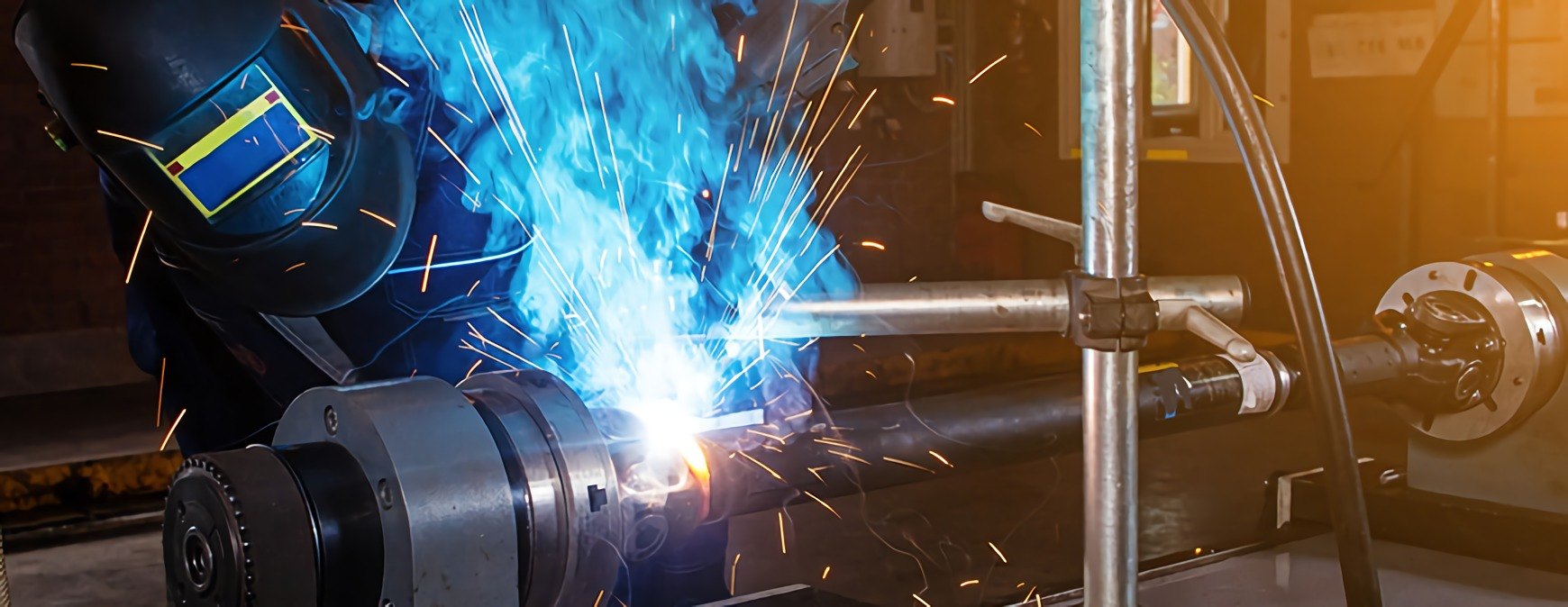TWS is a Great Training Option for Everyone
Learn more about how we can prepare you to advance your career.
Welding machines or welding guns or welders are among the most essential tools for a welding professional. Welding machines generate heat that melts metal parts, so that these parts can be joined. However, there is no single welding machine that is suitable for all welding projects.
Types of welding techniques
Before you chose a welding machine, you must know which kind of welding technique you will apply. Each welding techniques requires a specific type of welder.
- works with most alloys or joints
- can be used indoors and outdoors, and in drafty areas
- works with rusty and dirty metals
- good for thicker metals
- economical
- easiest to learn
- high welding speeds
- works well with thin and thick metals
- cleaner welds with no slag
- same equipment can be used for flux-cored arc welding
- works well outdoors and in windy conditions
- works well on dirty and rusty metals
- good for out-of-position welding
- deep penetration for welding thick areas
- high metal deposition rate
- works well with thin sections of alloy steel, stainless steel, and non-ferrous metals like aluminum, magnesium, and copper alloys
- high quality, precise welds
- weld beads that look good
- allows for heat input adjustment while welding with a foot control 1
- Quality of the weld: If you need a high quality weld that looks good, you want to choose a TIG welder. If you need to create a strong weld between rusty or dirty metals, you might consider a stick or flux-cored welding machine.
- Welding conditions: Rough outdoor conditions, such as wind, require a stick or flux-cored welder. This may occur at construction sites or shipyards.
- Metal thickness: While you can use stick welding machines for thick metals, thin materials call for MIG or TIG welders. The car manufacturing industry involves a lot of welding of thin metals.
- Metal types: TIG welders work well with all metals or alloys, except for cast iron. MIG welding is ideal for steel, stainless steel, and aluminum alloys. Stick welders work best on steel, stainless steel, and cast iron.
- Basic or complex machine: If you just started welding training and the welding job is simple, a basic machine like a small MIG welder would suffice. If you are advanced and the welding job requires more power, you may want to get a high-tech TIG welder.
- AC/DC power source: Steel and stainless steel are typically welded with a DC output. Aluminum and magnesium are best welded with an AC output. Should you weld a variety of materials, choose a combination AC/DC welding machine.
- Portable welding: If the power source will be moved, you need a portable welder that works with either an inverter or that is engine-driven.
- Welding power source duty cycle: The duty cycle is the amount of time you can weld without having to worry about overheating or burning the power source. While a hobby welder may only need a 20% duty cycle, a professional might use a complex TIG welding machine that has a 100% duty cycle. In most settings, duty cycles of 40%-60% are sufficient. 2
Stick Welding/SMAW
Stick welding uses an electric current flowing from a gap between metal and welding stick (arc welding electrode).
MIG Welding/GMAW
This technique uses a wire welding electrode on a spool that is fed at a constant speed. The arc is created by an electrical current between base metal and wire.
Have You Considered a Career in the Skilled Trades?
Fill out the form to recieve a no obligation info packet.
Flux-Cored Arc Welding
This process also uses a wire electrode that is constantly fed, though it does not need a shielding gas. The flux-cored wire shields the arc instead.
TIG Welding/GTAW
This welding process uses a non-consumable tungsten electrode. A constant current feeds energy cross the arc. A shielding gas protects the weld area.
Welding machine considerations
In addition to knowing which welding technique to use, choosing the right welding machine requires taking into account a number of important considerations:
Choosing the right welding machine depends on the type of job you want to do.
1 – https://www.millerwelds.com/resources/article-library/buying-your-first-welder-a-practical-informative-guide-for-doityourselfers
2 – https://www.millerwelds.com/resources/article-library/important-considerations-before-purchasing-a-tig-welding-machine-qa
This blog has been labeled as archived as it may no longer contain the most up-to-date data. For a list of all current blog posts, please visit our blog homepage at https://www.tws.edu/blog/







